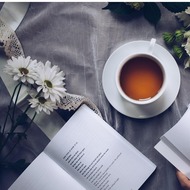Advancing Change through Public Awareness
(View Complete Item Description)As diseases become stronger in nature, currently available antibiotics are no longer strong enough to suppress and cure said diseases. Therefore, what factors contribute to diseases becoming resistant to drugs and what public policies should be developed around them? In this problem-based learning module, students will work with partners or in groups to first assess the increasing problem of drug-resistant diseases and the toll they are taking on the American public. Additionally, students will work to investigate what hospitals and lawmakers are doing to address this problem. Once students understand and are familiar with the current state of affairs, they will then work to further understand and research exactly why this issue needs to be brought to the attention of the general public, in order to promote change to current hospital procedures and policies. Further, students will determine the current political climate and support (or lack thereof) for policy, and will analyze the interest in keeping, changing or removing said policies altogether. Once the group has a full understanding, students will then work to determine their position on the issues surrounding antibiotic resistant diseases and the policies associated with these diseases. As soon as the group reaches a consensus, students will work to research and determine a professional way in which to present their goals and objectives for curbing the issue of drug-resistant diseases.
Material Type: Lesson Plan




















